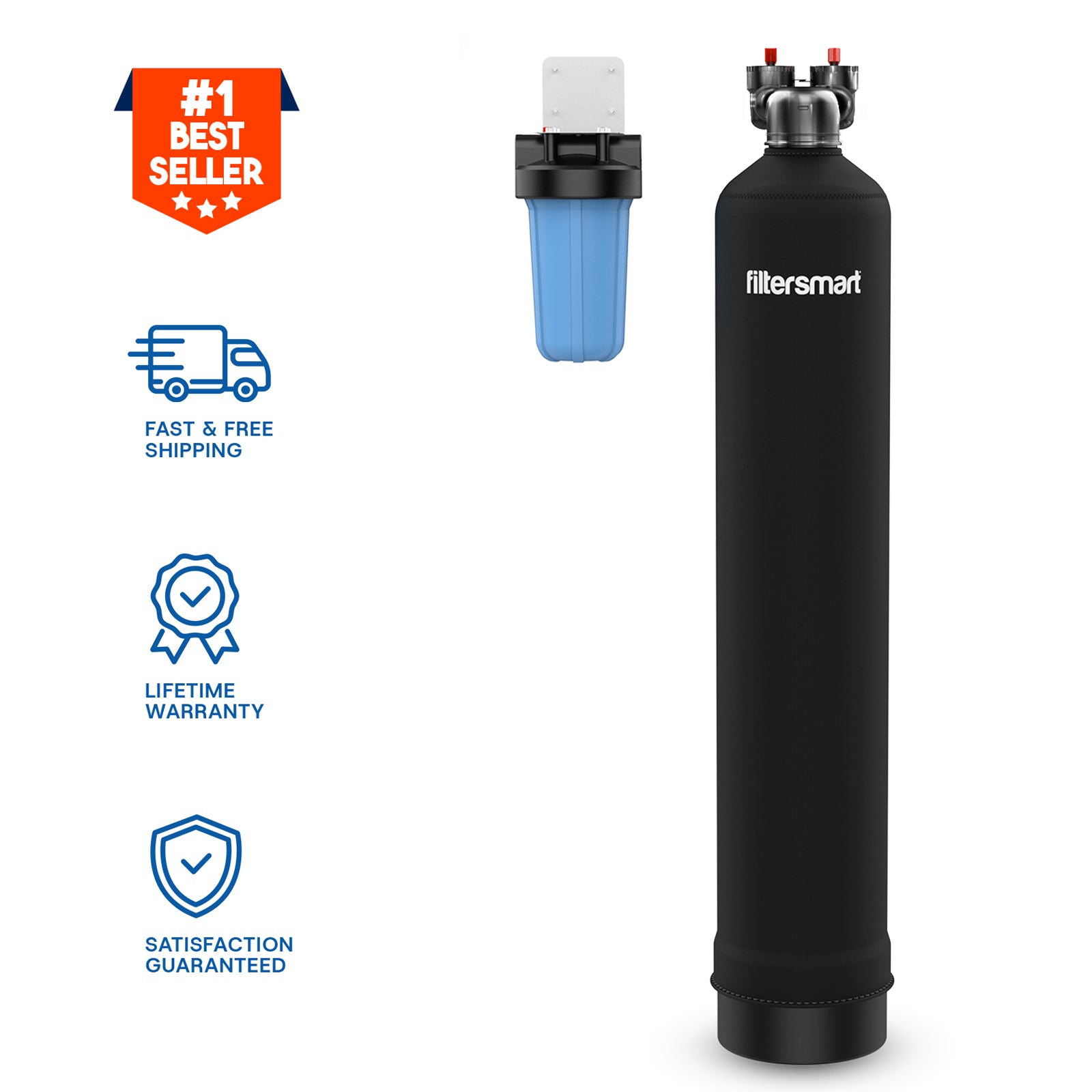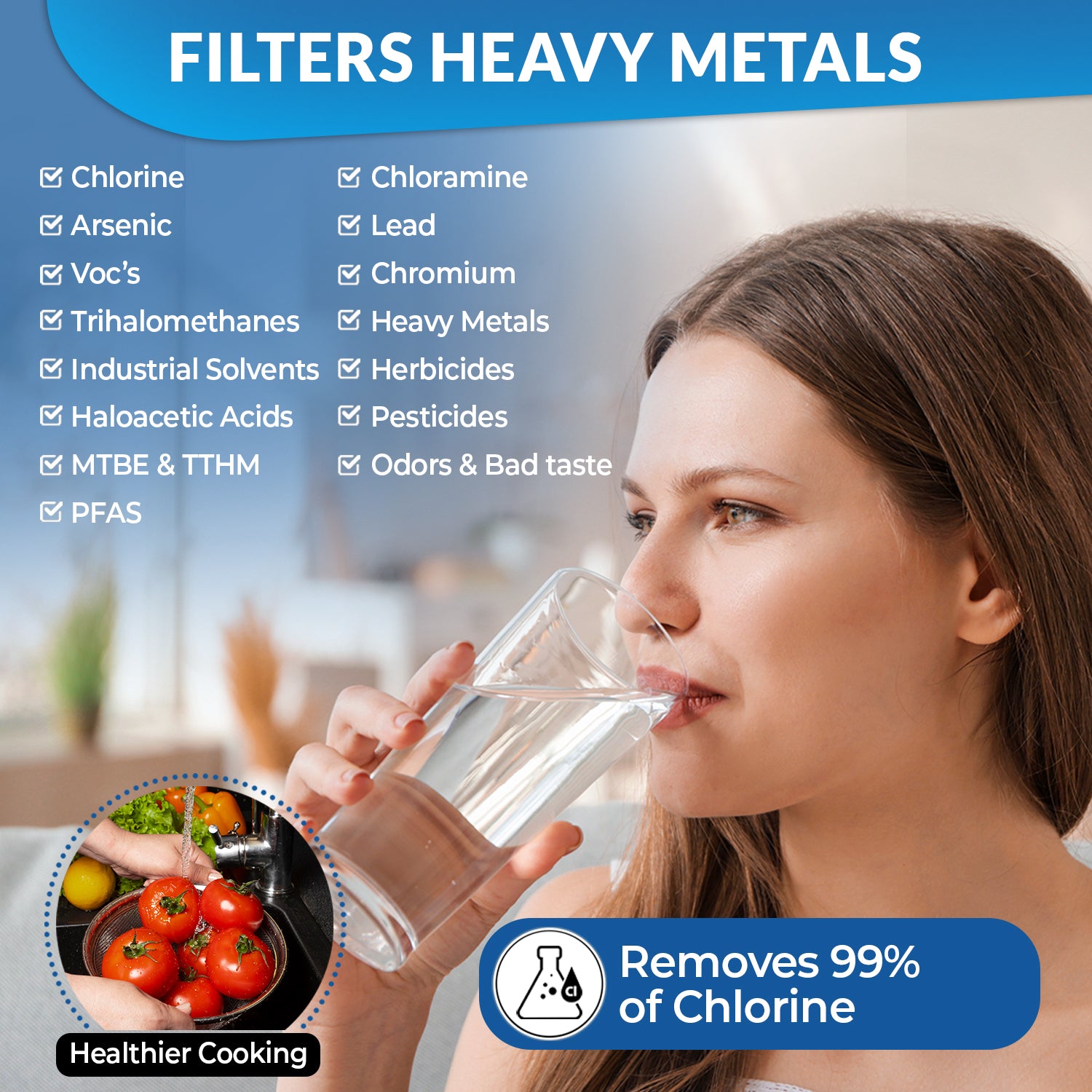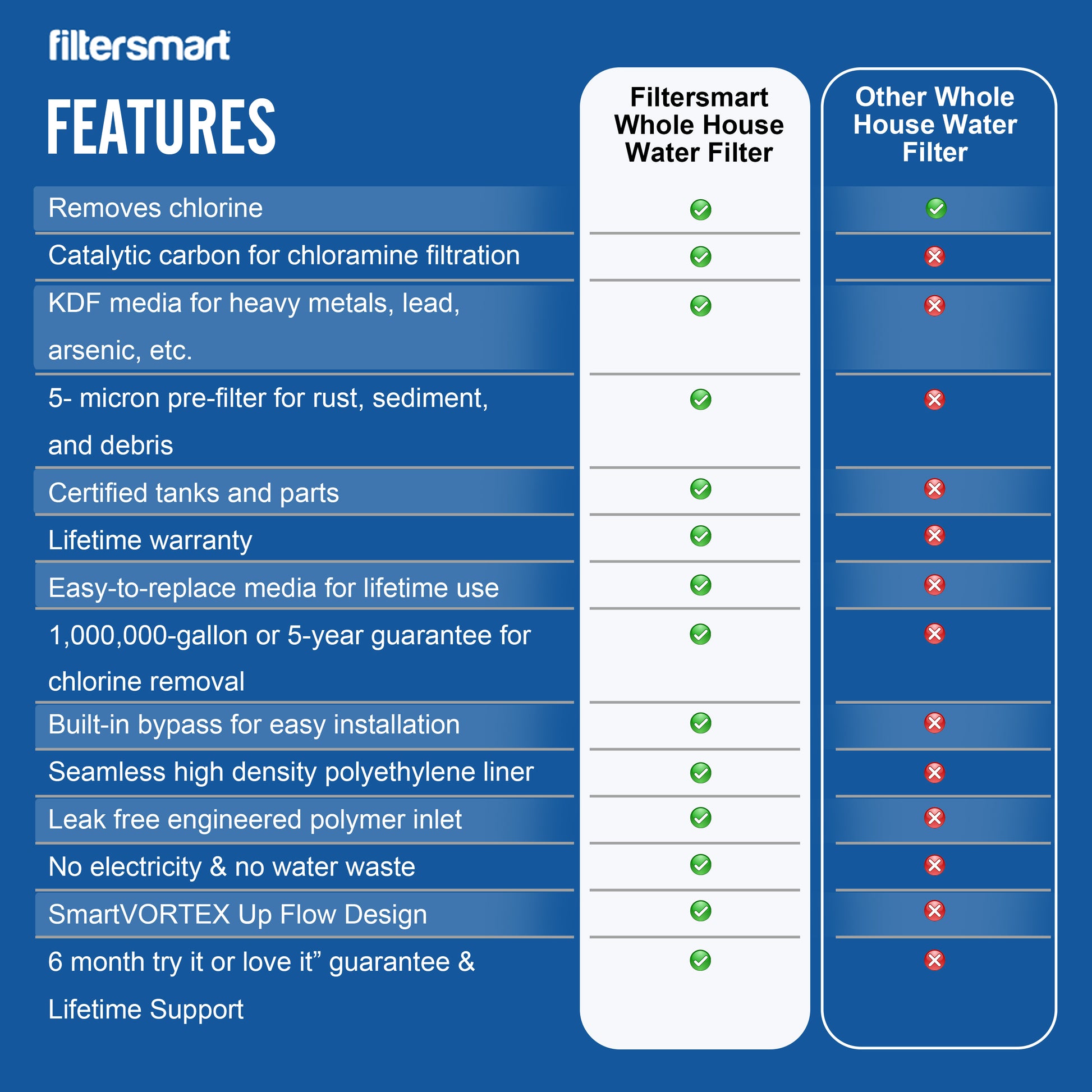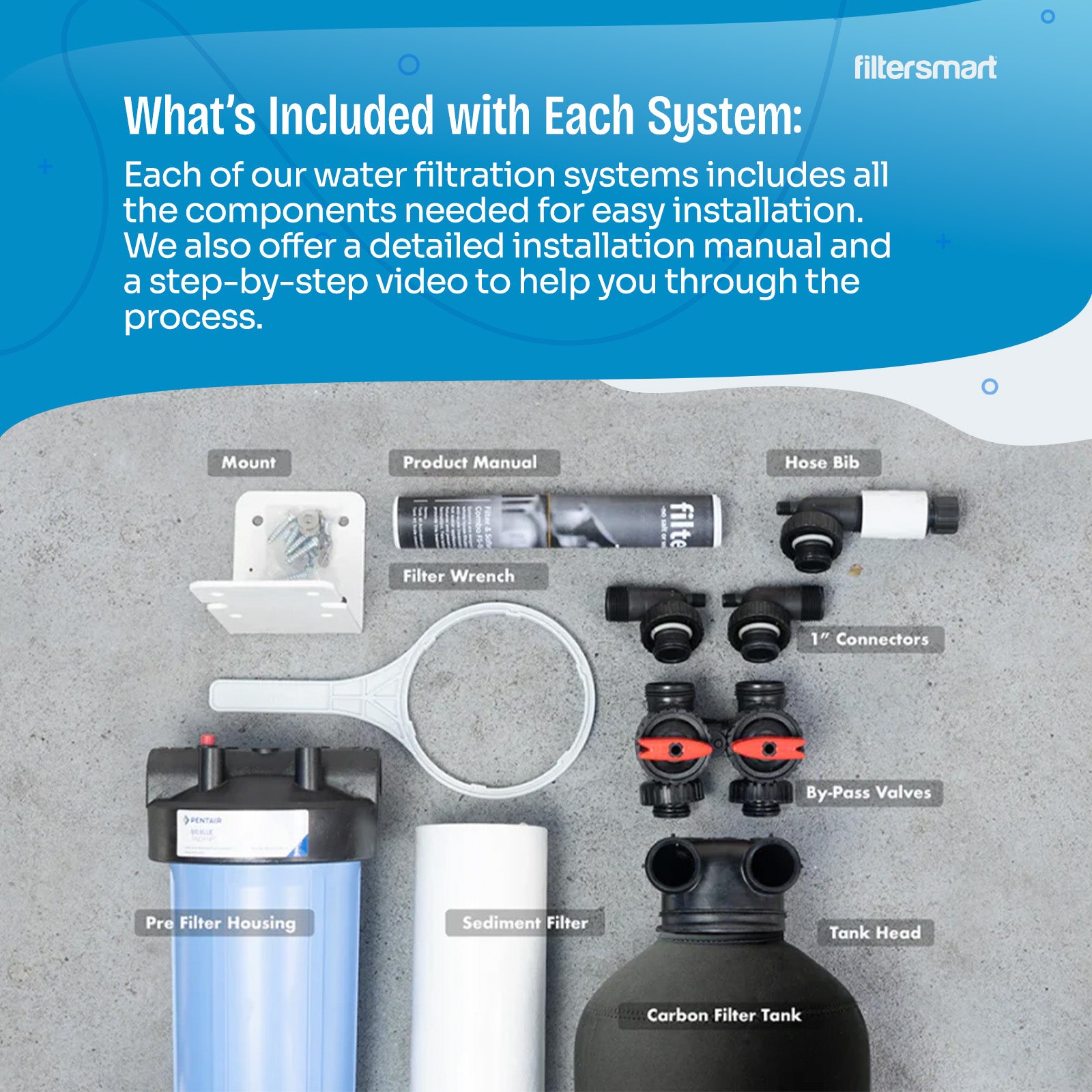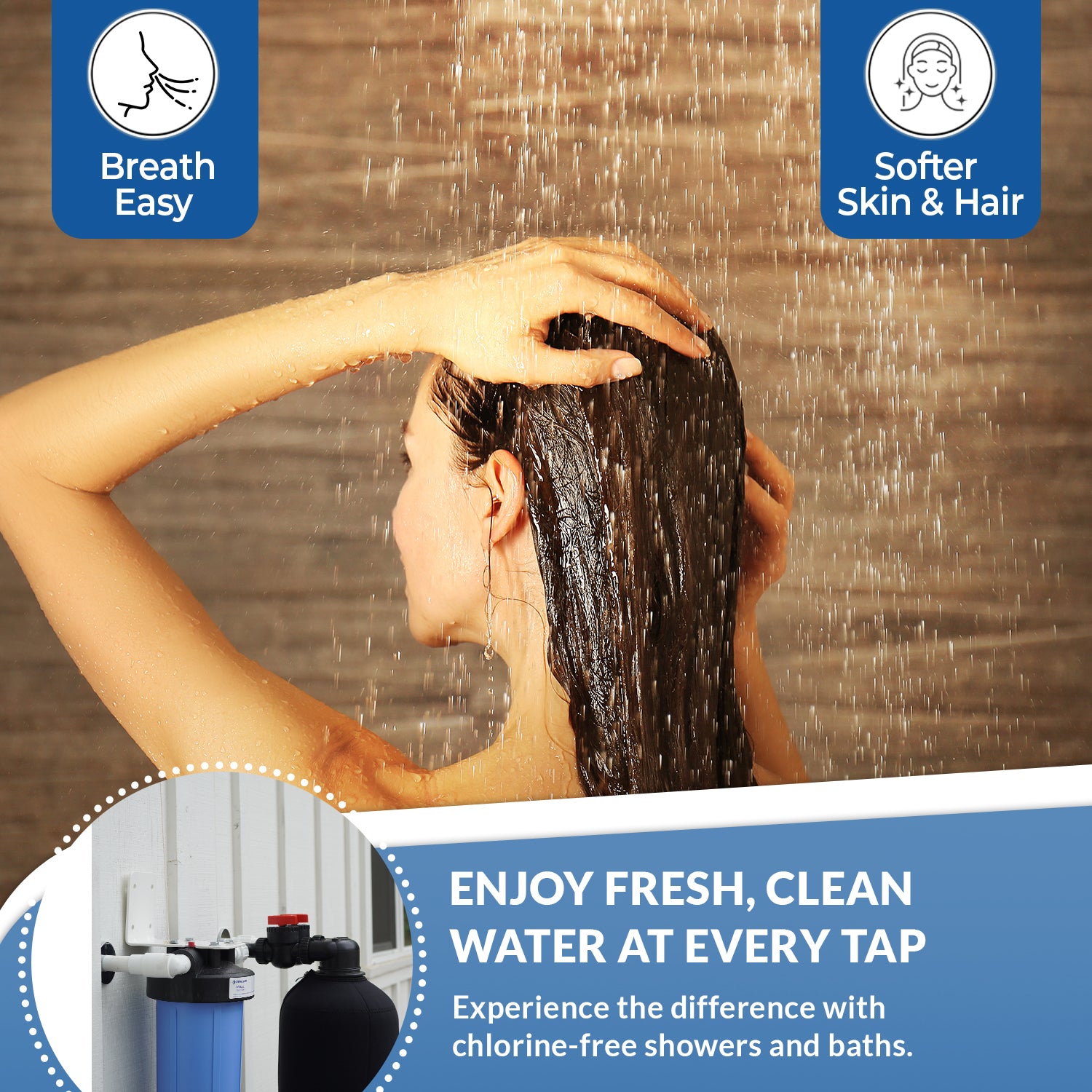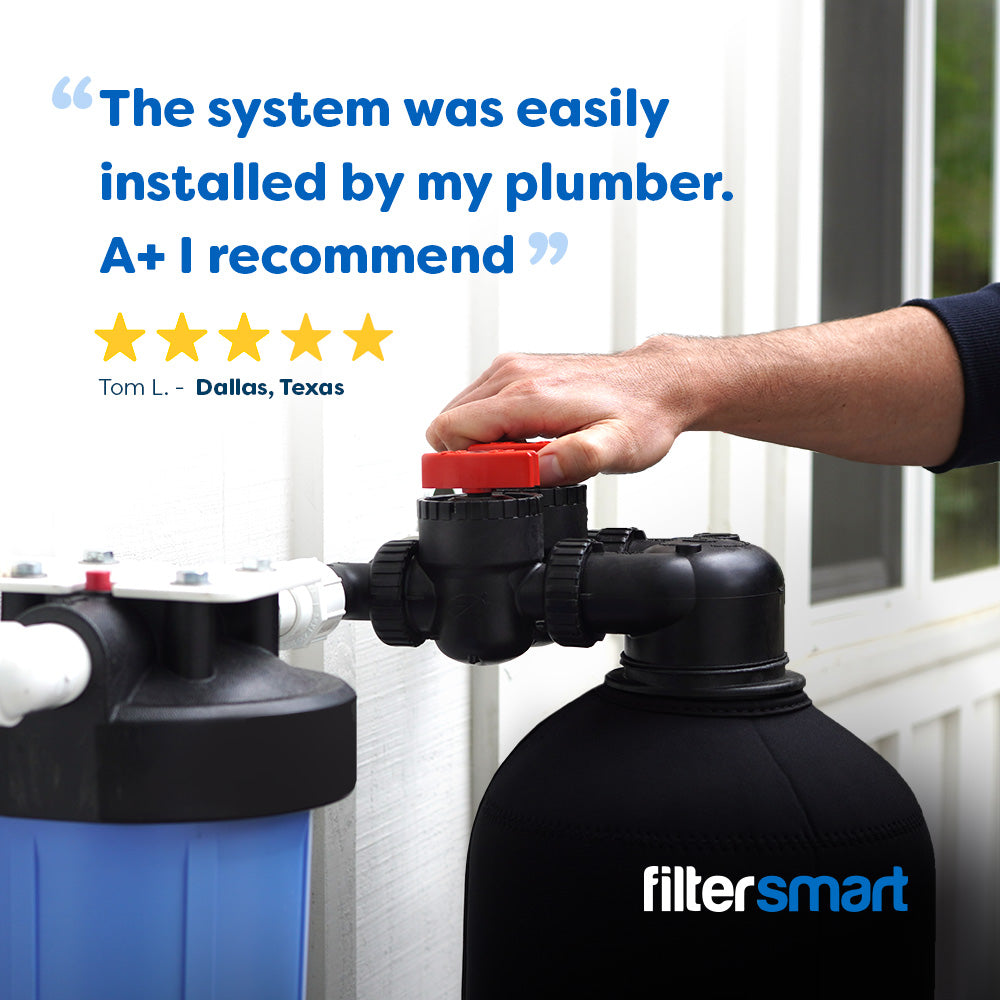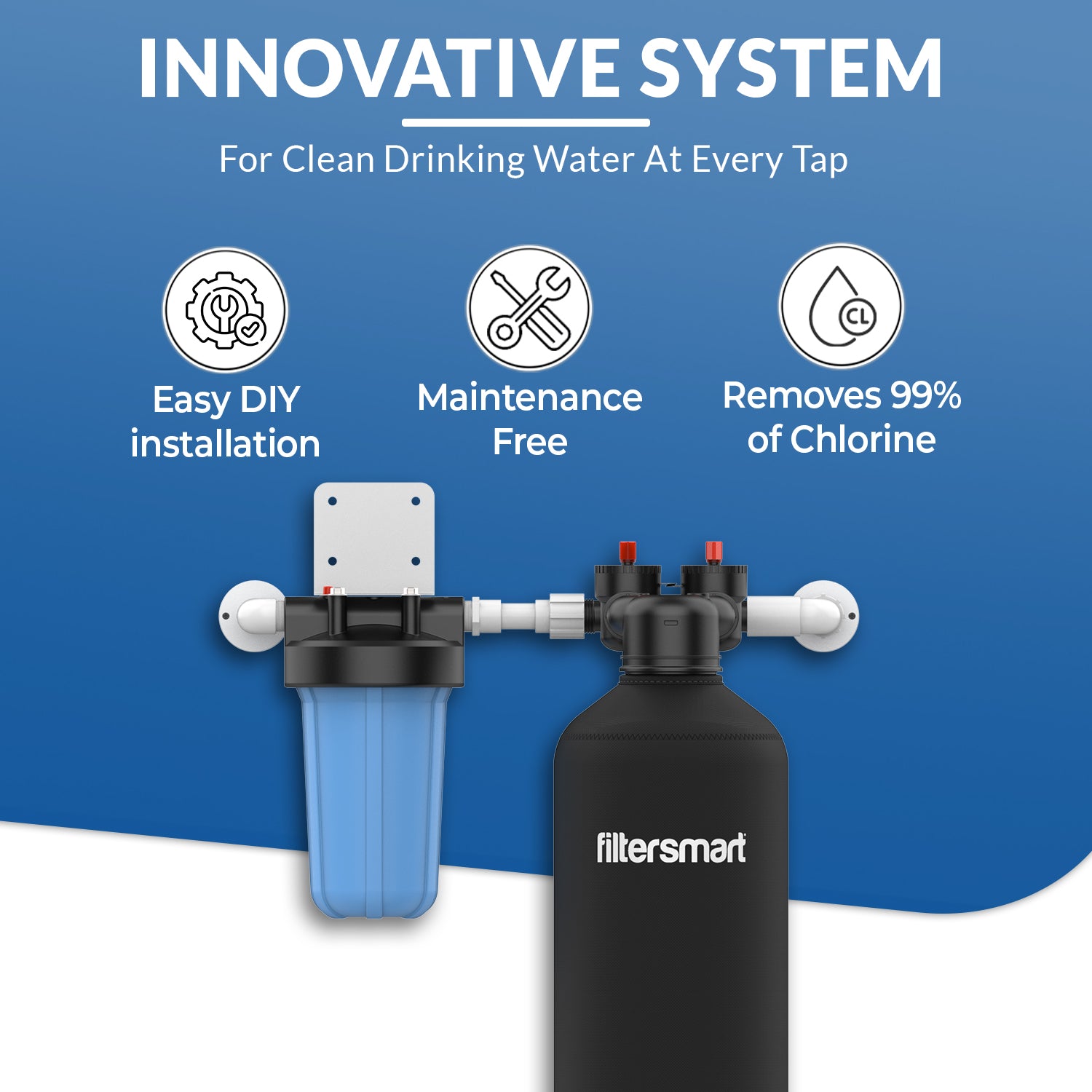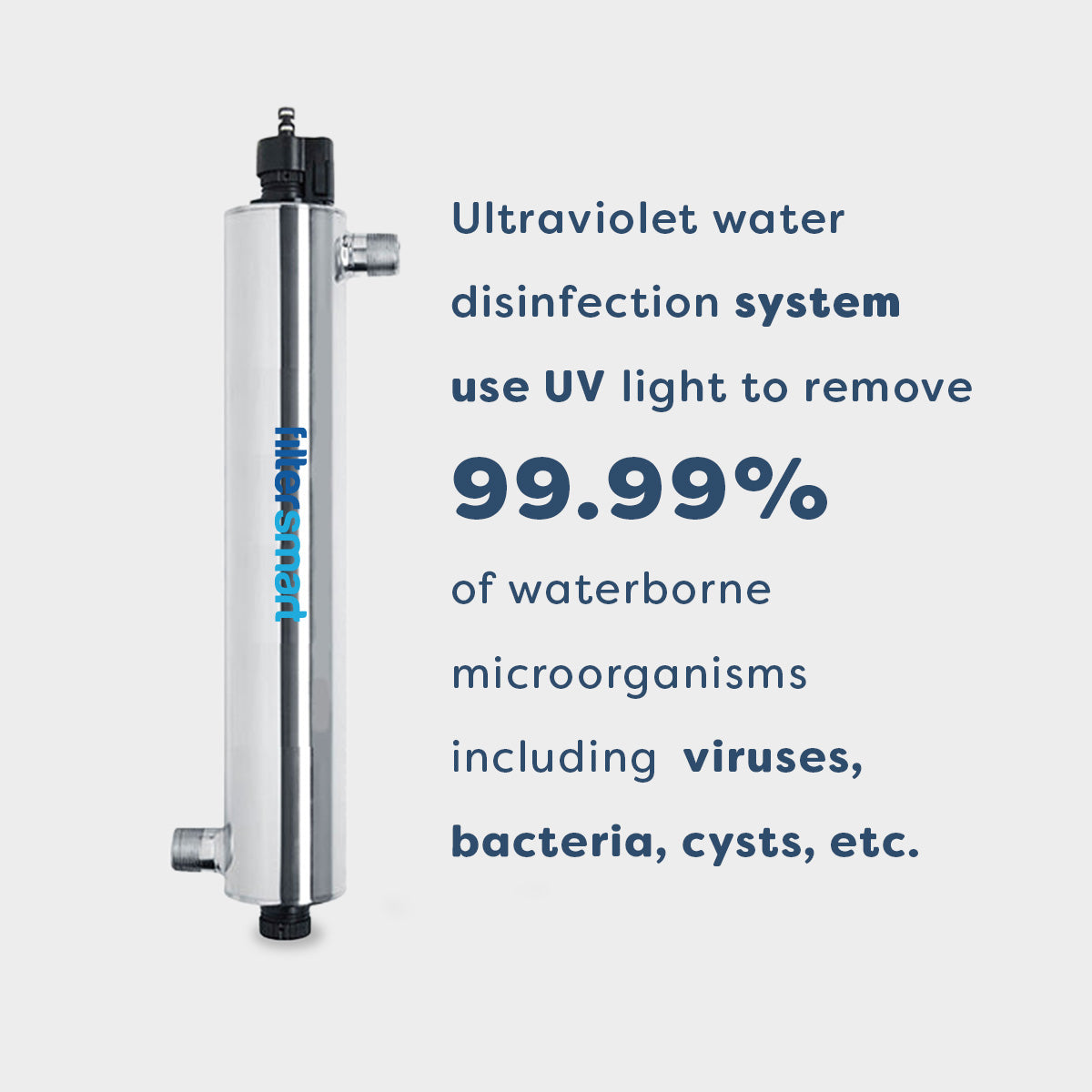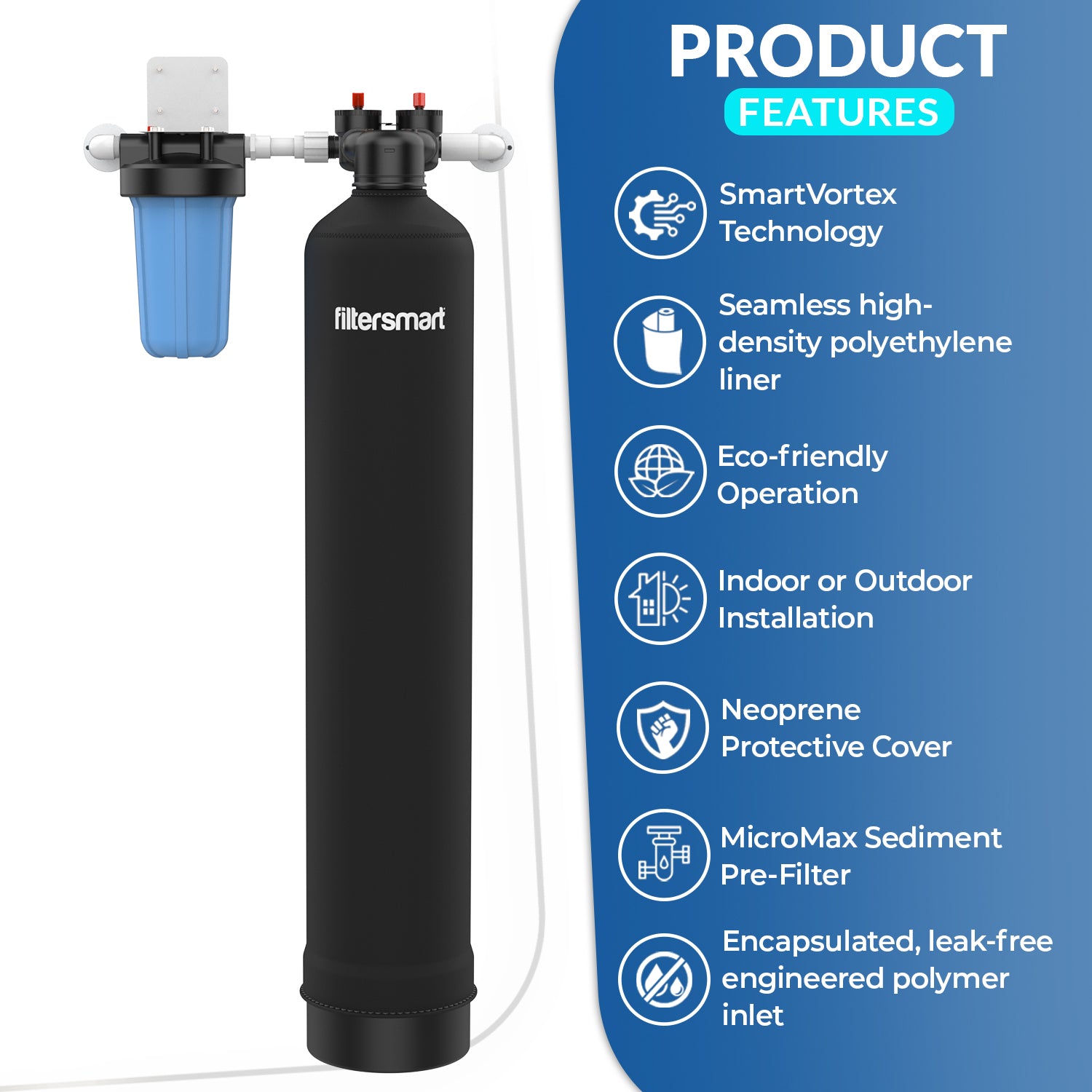1
/
of
10
Product Overview

Whole House Water Filter System- FS1000-1 Million Gallon
Whole House Water Filter System- FS1000-1 Million Gallon
Our Filter System removes impurities and contaminants for bottled-quality water throughout your home.
1,000,000 Gallons of Long-Lasting Filtration
Designed to last up to 1,000,000 gallons, providing exceptional performance and peace of mind for your household."
Removes contaminants
Chlorine, chloramine, heavy metals, PFAS, VOCs, lead, arsenic, and more
Tested & Certified
Our systems use certified tanks, parts and media.
Lifetime Warranty & Easy to maintain
Our system comes with a lifetime warranty and requires minimal maintenance, ensuring hassle-free operation and long-term reliability for your home

